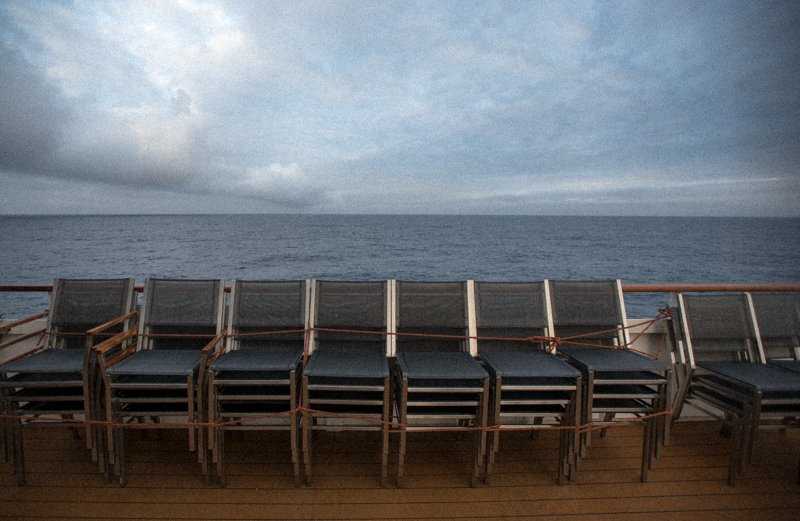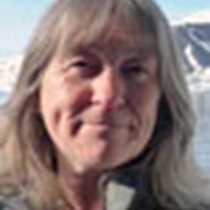It is a fine thing to spend a day out at open sea. The morning ocean was calm and benign, with minimal swell and only a light breeze, giving us an unexpectedly comfortable first day of the Drake Crossing. As well as the Wilson’s storm petrels that we were already used to seeing down on the Peninsula, we were joined by occasional open-ocean seabirds such as grey-headed, black-browed and light mantled albatross, and even a soft-plumed petrel.
A relaxing day at sea was before us, with no land in sight. This gave an opportunity for some presentations. First, Jamie Coleman enlightened us about life on the isolated sub-Antarctic island of South Georgia where he has just spent fourteen months as a British Antarctic survey scientist, 800 miles away from the nearest civilisation and at best five days away from medical intervention. As well as work on the impact of the Patagonian toothfish and krill fisheries on the penguin and fur seal populations, he explained how the eight overwinters passed their time and kept themselves sane in that remote environment.
After lunch Bud Lehnhausen gave his talk on ‘Oceans 101’, describing the ocean environment at different depths, and explaining ocean productivity, the upwelling of nutrient-rich cold water to the surface, how waters of the Antarctic oceans influence the entire globe, the over-riding importance of krill in the food chain, and the impacts of fishing on the environment. True to form, just as Bud’s presentation was drawing to a close at around 59⁰19’ south, more cetaceans were spotted up ahead of the ship. This was a group of large ‘Type A’ Killer Whales, which included one male with a remarkably large dorsal fin, which we could observe only because of the calm sea conditions, allowing the captain to manoeuvre the ship deftly in the normally more turbulent waves.
Finally James Balog gave his thought-provoking presentation entitled ‘Why Ice Melts’. With compelling images and words he related how Greenland and the Arctic has lost unimaginable quantities of glacier and sea ice in the last ten years, how Antarctica loses between 40 and 200 billion tons of ice per year, how global temperatures and sea levels are rising, and what we can do about it.









